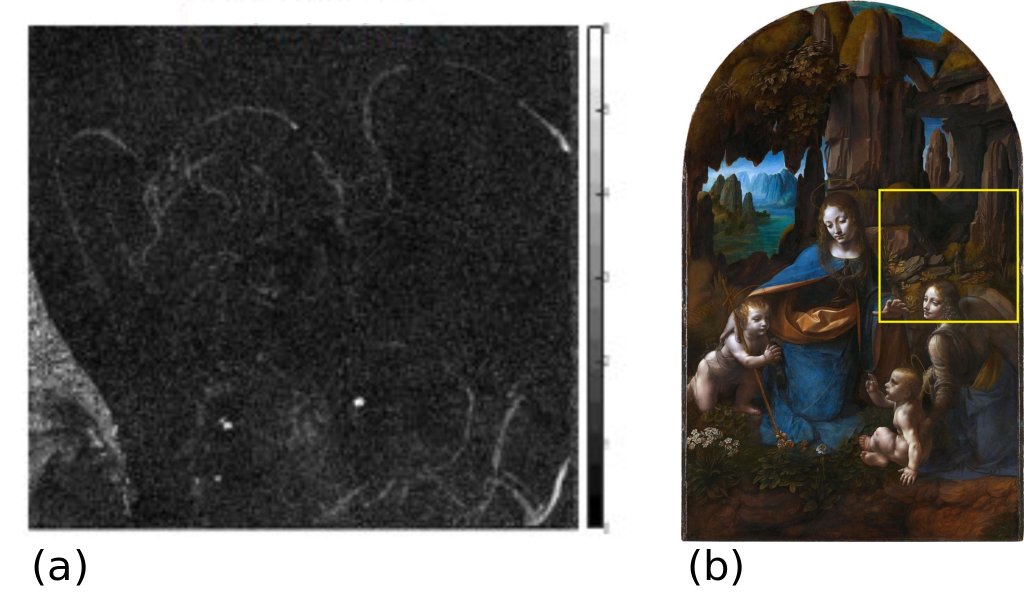ARTICT - Algorithms that Helped Reveal Leonardo's Hidden Drawings
Challenge
Macro X-Ray Fluorescence (XRF) scanning is an increasingly widely used imaging technique for the non-invasive detection and mapping of chemical elements in Old Master paintings. A macro XRF scanning device sequentially illuminates sub-millimetre spots (or pixels) of a painting with a primary X-ray beam that can penetrate through surface layers, exciting the emission of X-ray photons with energies that are specific to the chemical elements present within the pigments used in the painting. The X-ray photons emitted at each pixel are detected as a spectrum consisting of a collection of pulses due to all of the elements in this region. Hence, the presence of an element can be confirmed in a particular region if all the expected pulses corresponding to that element are detected within the XRF spectrum. However, paintings are created by complex pigment mixtures and therefore many elements are present at each single pixel often also due to the presence of concealed designs below the surface. As a consequence of that it is quite common that pulses related to elements of interest in a painting overlap. The process to disentangle these pulses is very challenging and is known in the heritage sector as “deconvolution”.
Approach
Existing approaches for XRF signal deconvolution require varying degrees of expert user input. Our team has developed a new fully automatic method to process XRF spectra. It automatically detects the pulses within the signal and produces the element distribution maps for the painting and a confidence map. The methods is able to separate nearby pulses and is also able to retrieve weak signals buried in noise [1]. Our approach leverages ideas in spectral estimation and sparse sampling theory to fully exploit the specific properties of the XRF spectra. The algorithm has helped the discovery of abandoned under-drawings in Leonardo’s “The Virgin of the Rocks” [1] (see also Fig.1).

Representative Publications
[1] S. Yan, J. Huang, N. Daly, C. Higgitt and P. L. Dragotti, “Revealing Hidden Drawings in Leonardo’s ‘the Virgin of the Rocks’ from Macro X-Ray Fluorescence Scanning Data through Element Line Localisation”, IEEE International Conference on Acoustics, Speech and Signal Processing (ICASSP), May 2020.
Representative Media Coverage
“New algorithm helps uncover forgotten figures beneath da Vinci painting”, Imperial Press (also reported by e.g., Daily Mail, CNN), February 2020.